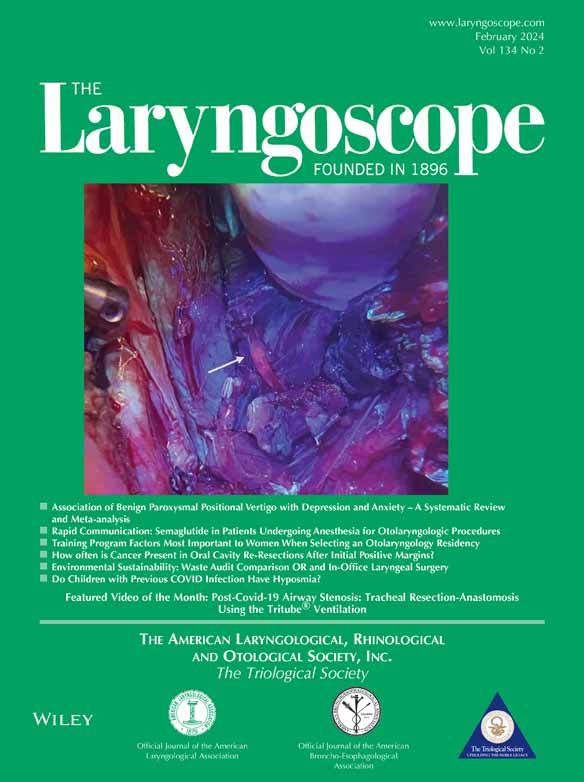Disruption Index in Otolaryngology: Uncovering a Bibliometric History of a Rapidly Evolving Field
a.h.s. and a.h. contributed equally to this work.
Amar H. Sheth was supported by the Yale School of Medicine Office of Student Research.
The authors have no funding, financial relationships, or conflicts of interest to disclose.
Abstract
Objectives
As the volume of research publications in the field of otolaryngology has increased, so has the need to qualify articles through bibliometric analyses to identify the most important and impactful work in the field. Herein, we aim to identify the 100 most disruptive articles in ENT over a 60-year period and examine how disruption index (DI) compares with other bibliometrics in identifying impactful works in the field.
Methods
In this cross-sectional bibliometric analysis, articles published between 1954 and 2014 in commonly referenced otolaryngology-head and neck surgery (OHNS) journals were queried in PubMed. Publications were characterized by DI, journal, subspecialty discipline, and status as an impactful article in the field as determined by other bibliometrics such as citation count, the “Sleeping Beauty Index,” and those derived by the modified Delphi process.
Results
Of the 122,094 articles queried, 67,561 (55.3%) had available citation count as well as disruption score data, meeting inclusion criteria. The most represented subspecialty disciplines within the top 100 most disruptive articles were Otology/Neurotology (28%), General (Comprehensive) (27%), Head and Neck Surgery (12%), and Laryngology (11%). Fifty percent of articles identified as Sleeping Beauties and impactful via modified Delphi approach had scores in the top 86th percentile.
Conclusion
DI in otolaryngology can be appreciated as an added dimension to existing indices and can unearth seminal research, which serve as early foundations of evidence-based management in the field of OHNS today.
Level of Evidence
NA Laryngoscope, 134:629–636, 2024




